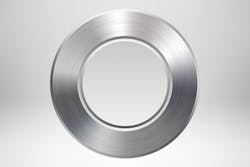Which of the following are orifice plate designs?
A. Concentric
B. Conical
C. Eccentric
D. Integral
E. Quadrant
F. Segmental
The most common design is the thin concentric orifice plate (Answer A), which operates in the turbulent flow regime. Eccentric (Answer C) and segmental (Answer F) orifice plates can handle similar applications for fluids with solids in liquid or liquids in gas.
Other designs were developed to handle applications in which the previously mentioned designs could not be used. Conical (Answer B) and quadrant (Answer E) orifice plates can operate at relatively low Reynolds numbers. Integral orifice plates (Answer D) are used to measure small flow rates.
Additional complicating factors
Most of the research on differential pressure flowmeters in the last 90 years was performed on thin, concentric orifice plates, thus the flow coefficients and equations associated with concentric orifice plates are quite good. Other orifice plate designs will likely result in inferior performance.
Spitzer may be reached at 845-623-1830 or via spitzerandboyes.com. Click on the Products tab to find his Consumer Guides to various flow and level measurement technologies.
About the Author
David W. Spitzer
David W Spitzer’s new book Global Climate Change: A Clear Explanation and Pathway to Mitigation (Amazon.com) adds to his over 500 technical articles and 10 books on flow measurement, instrumentation, process control and variable speed drives. David offers consulting services and keynote speeches, writes/edits white papers, presents seminars, and provides expert witness services at Spitzer and Boyes LLC (spitzerandboyes.com or +1.845.623.1830).

